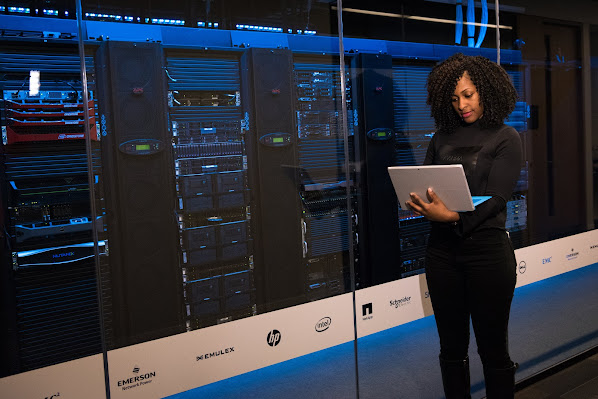How to Check the GPU Temperature of Your Computer
How to Check the GPU Temperature of Your Computer
The lifespan and
performance of your hardware are impacted by the PU's temperature. Thankfully,
there are several approaches to monitor it.
ESSENTIAL NOTES
• High GPU
temperatures have the potential to impair performance or even crash the system.
To make sure the GPU temperature stays within reasonable bounds, it is
essential to monitor it.
• Built-in GPU
temperature monitoring is available in Windows Task Manager, NVIDIA GeForce
Experience, and AMD Radeon Software, enabling users to monitor GPU temperature
and other performance metrics.
• Additional features
like overclocking and temperature data logging are provided by third-party
tools like MSI Afterburner, EVGA Precision X1, and HWiNFO64, which provide
users with more customization options for tracking and maximizing GPU
performance.
Elevated temperatures can diminish your GPU's efficiency and potentially force your system to shut down. There are several ways to keep an eye on the temperature of your GPU; read more about some of them here.
Why Is GPU Temperature Monitored?
Your GPU produces heat as it operates. Your GPU may undergo thermal throttling if it becomes too hot, which will significantly lower performance. Additionally, a hot GPU puts more strain on the fans in your GPU cooler, increasing the likelihood of a fan failure. In order to prevent damage, a GPU may even initiate a shutdown if it reaches a critical temperature.Fortunately, it's usually possible to fix a GPU that overheats. Performing a thorough cleaning on your computer could be the easiest solution. or figuring out what cooling and airflow setup is optimal for your PC, but you have to notice the issue first. Monitor your GPU temperatures to ensure that temperatures are staying within acceptable ranges.This article contains a number of programs with features that allow you to overclock your GPU. Overclocking has the potential to exacerbate thermal issues and harm your hardware. Save those features for when you've read up on safe overclocking techniques.
Windows Task Manager for GPU Temperature Monitoring
Windows 10 has had built-in GPU temperature monitoring since the May 2020 update, but Windows 11 does as well. Task Manager is where you can find the temperature monitor.Ctrl+Shift+Esc will open it. If "More details" is visible at the bottom left, click it.Select the performance tab from the top menu. Click "GPU" when you see it after swiping down the left side. On the GPU page, the temperature is shown at the bottom.
GeForce Experience from NVIDIA
NVIDIA offers GeForce Experience, a software designed to track the temperature of your GPU. To begin, open it from your Start menu.You must access the in-game overlay settings in order to locate the temperature monitor. In the upper right corner, click the triangle icon.In the resulting window, select "Performance."This section contains a wealth of GPU-related data, such as the GPU clock, temperature, fan speed, and power draw.To alter the way this data is shown, select the gear icon located at the lower right corner. You can even choose to have an in-application overlay so that you can monitor your temperature while playing games.AMD Radeon SoftwareAMD's Radeon Software is a tool for tracking your GPU. It can be opened from the Start menu.Click the "Performance" tab located in the upper left corner of the Radeon Software home screen to view the GPU temperature monitor.In the lower left corner, you can see the GPU temperatureThe monitoring software from AMD allows you to record GPU information into a CSV file. If you wish to compare the relationship between GPU temperature and other GPU metrics, such as GPU utilization, or if you want to keep an eye on your GPU temperature for extended periods of time, this feature is useful.
Tools for Monitoring GPU Temperature by Third Parties
MSI Recirculator
Since MSI Afterburner is compatible with nearly all GPUs and offers customization options like overclocking, it is a well-liked option among enthusiasts for tracking GPU performance. It is able to show the information while you are playing the game, just like the NVIDIA and AMD tools. Like AMD's Radeon Software, it also has the capacity to log performance statistics.
Located right on the home page is the temperature gauge
.EVGA Accuracy X1
While Afterburner and Radeon Software share many of the same fundamental features, EVGA's Precision X1 is limited to supporting NVIDIA GPUs. Similar to Afterburner, the temperature indicator allows temperature data
NFO64 HWiN
HWiNFO64 has a distinct design from Precision X1 or Afterburner and goes above and beyond monitoring the temperature of your GPU. It supports logging any metrics it can display and gives real-time data about every part of your system. Upon starting the application, you will be prompted to choose between running "Summary-only" or "Sensors-only." Press "Sensors-only" and press "run."
Look for the "GPU[#]:" section; the name of your GPU should be listed to the right of it. Your GPU's temperature will be right underneath that. There may be more than one GPU visible if you have a CPU with integrated graphics (such as an AMD APU or an Intel CPU with an iGPU) and a dedicated GPU. These are but a handful of the alternatives. Every manufacturer of Add-In Board (AIB) GPUs has a software similar to MSI's Afterburner and EVGA's Precision X1. A lot of other manufacturers of gaming hardware also sell monitoring software that measures the temperature of your GPU.
Since the majority of these solutions have similar features,
choose the one that you think is most user-friendly and appealing.





.jpg)
.jpg)
Comments
Post a Comment